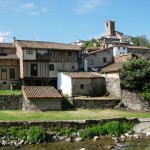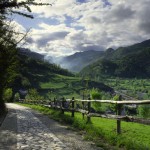1st. Day. SEVILLA
Arrival in Sevilla. Visit to the city Centre. Panoramic Tour along Guadalquivir River till Torre del Oro, which was built in Arab times. Visit to the late gothic Cathedral, the third-largest church in the world. La Giralda, a tower from 12th Century and *El Alcazar built in the place of an old Arab Palace. Walk around the typical Santa Cruz quarter. Accommodation.
*El Alcázar: Mondays closed
2nd Day. SEVILLA – CARMONA – FUENTE DE CANTOS
Ride to Itálica and visit to the ancient Roman settlement excavations. Continue to Carmona which in ancient times was considered to be one of the most important cities in Andalusia. Walk around the city and lunch at the Parador housing a 14th century Arab fortress. In the afternoon, ride to Calera de León where an ancient Monastery under the Order of St. John stands. Accommodation at Fuente de Cantos which is the birthplace of painters like Francisco de Zurbarán and Nicolás Megía.
3rd Day. FUENTE DE CANTOS – CASAR DE CACERES
Continue to Zafra, one of the most beautiful towns in Extremadura. Next stop will be in Mérida, also known as the Roman Augusta Emérita where several monuments from that time can be admired. Don’t miss a visit to the *National Roman Art Museum. Ride to Cáceres, declared Heritage city by UNESCO. Walk around the old town where a visit to St. James and St. Mary Churches are recommended as many other monuments/palaces like “Casa del Tiempo”, “Casa de Godoy”, “Casa de los Golfines de Abajo” y de “Arriba”, all of them from the 16th Century. Accomodation at Casar de Cáceres.
·National Roman Art Museum: Mondays closed
4th Day. CASAR DE CACERES – MONFRAGÜE – CASAR DE CACERES
Today we recommend an excursion to Trujillo, home town of the Conquerors Francisco Pizarro and Francisco de Orellana, discoverers of America. But it is also the hometown of others celebrities such as Cartagena de India’s first Bishop. Later on, visit to Monfragüe National Park, being a Paradise for wildlife lovers where vultures, black storks and so on… can be watched. Return to Casar de Cáceres with a relaxing evening at the hotel’s Spa.
5th Day. CASAR DE CACERES – PLASENCIA – HERVAS – BEJAR.
Riding to Cañaveral to get Palancar Monastery and continuing to Galisteo surrounded by Arab Walls, finally we will reach Plasencia, with its magnificent gothic cathedral from the late 12th Century and early 14th century. Leaving Plasencia, drive through Caparra with its Roman Triumphal Arch, an ancient cross mark. Before reaching Béjar is a must visit Hervás with its maze of streets and Jewish buildings forming the well-known Judería. The ride continues towards Béjar, famous for its tasteful sausages. Accommodation.
6th Day. BEJAR – ZAMORA – LEON.
Departure to Salamanca and visit to the University dating from 16th century. Its Plateresque facade characterizes the first period of Spanish Renaissance architecture. Visit to the Roman Bridge and Plaza Mayor, one of the most beautiful in Spain. If ever you wish you can go to Cabeza de Diego Gómez to visit a wild bull ranch. Then we will continue towards Zamora with a lot of important Romanesque religious buildings. Finally visit to the Byzantine cathedral. Today’s trip will end in León capital. Accommodation.
7th Day. LEON – MIERES – RIBERA DE ARRIBA – GIJÓN.
In León, which was the capital of its Kingdom and one of the main cities in Christian Middle Ages, three main buildings stand out: the Cathedral, San Isidoro Collegiate Church and San Marcos, a very beautiful old Hospital for Pilgrims. Continue to Pajares Pass, natural border between “Castilla y León” and “Asturias”. Later a stop will be made to visit the Asturian Pre-romanesque style Church Santa Cristina de Lena, dating from 9th century. Then ride to La Foz de Morcín with its Dairy Museum and afterwards in Santa Eulalia we discover a beautiful sceneries over Aaramo Mountains. At Riosa, it is worthwhile to comtemplate the spectacular views from the Angliru Pass, one of the hardest passes in Spains Cycle Race. Later continue to the Ribera de Arriba Area where in a very small village called Bueño, you can find a group of “Horreos and Paneras” (typical Asturian granaries). This village was declared “Exemplary Village in Asturias 2012”. Visit to the small Museum. After this visit we will arrive late afternoon at Gijón.
* Museum Collegiata Church San Isidoro: open only in the morning
8th Day. GIJÓN.
Walk around the old town and visit to the 1st centrury Roman Terms which seem to be the best preserved of North Spain. Later on stroll along the beautiful beach in town.



 Photos authorized by: Ayuntamiento de León, Cooperación Ciudades Ruta de la Plata, Ayuntamiento de Aller y Ayuntamiento de Monasterio
Photos authorized by: Ayuntamiento de León, Cooperación Ciudades Ruta de la Plata, Ayuntamiento de Aller y Ayuntamiento de Monasterio 
